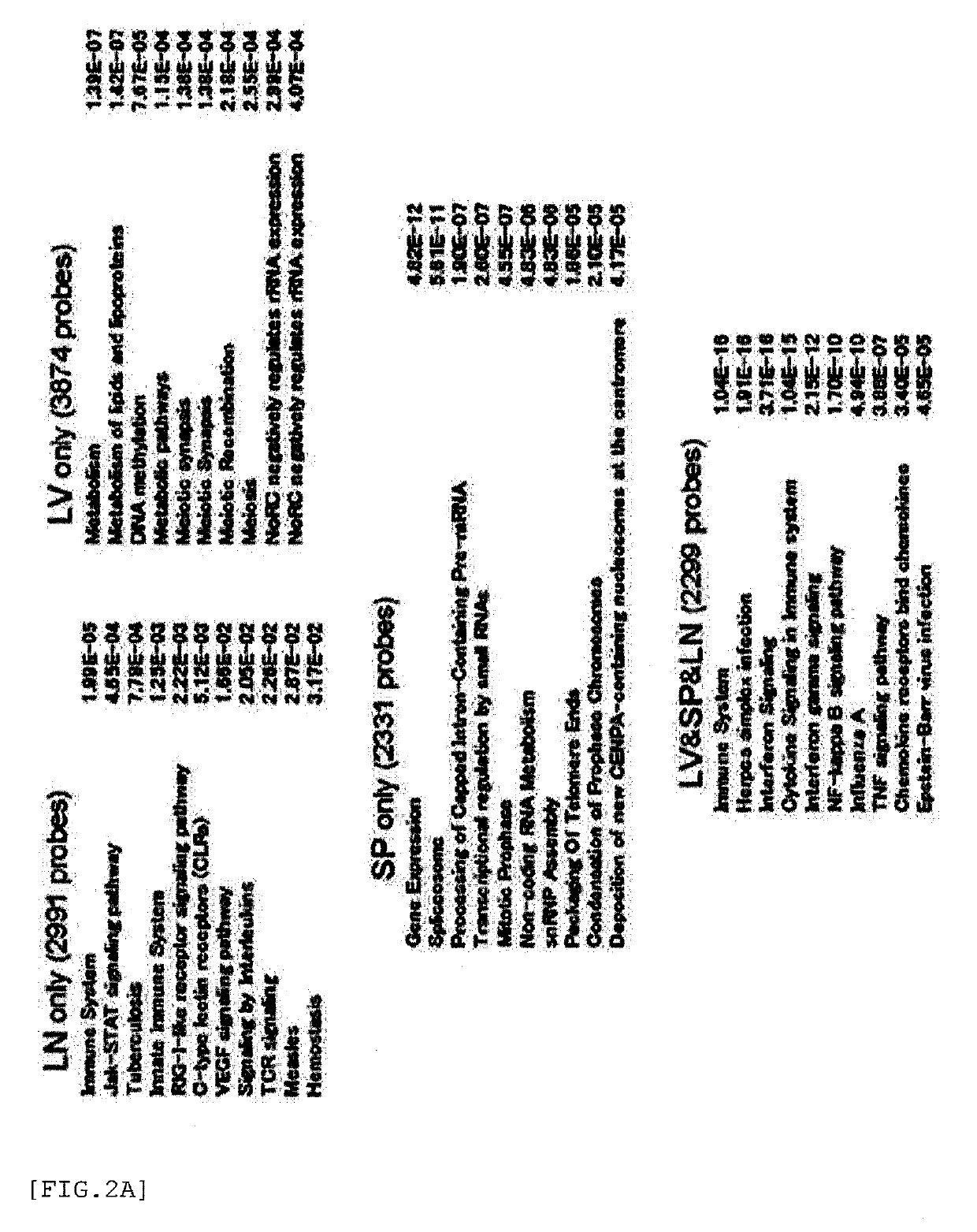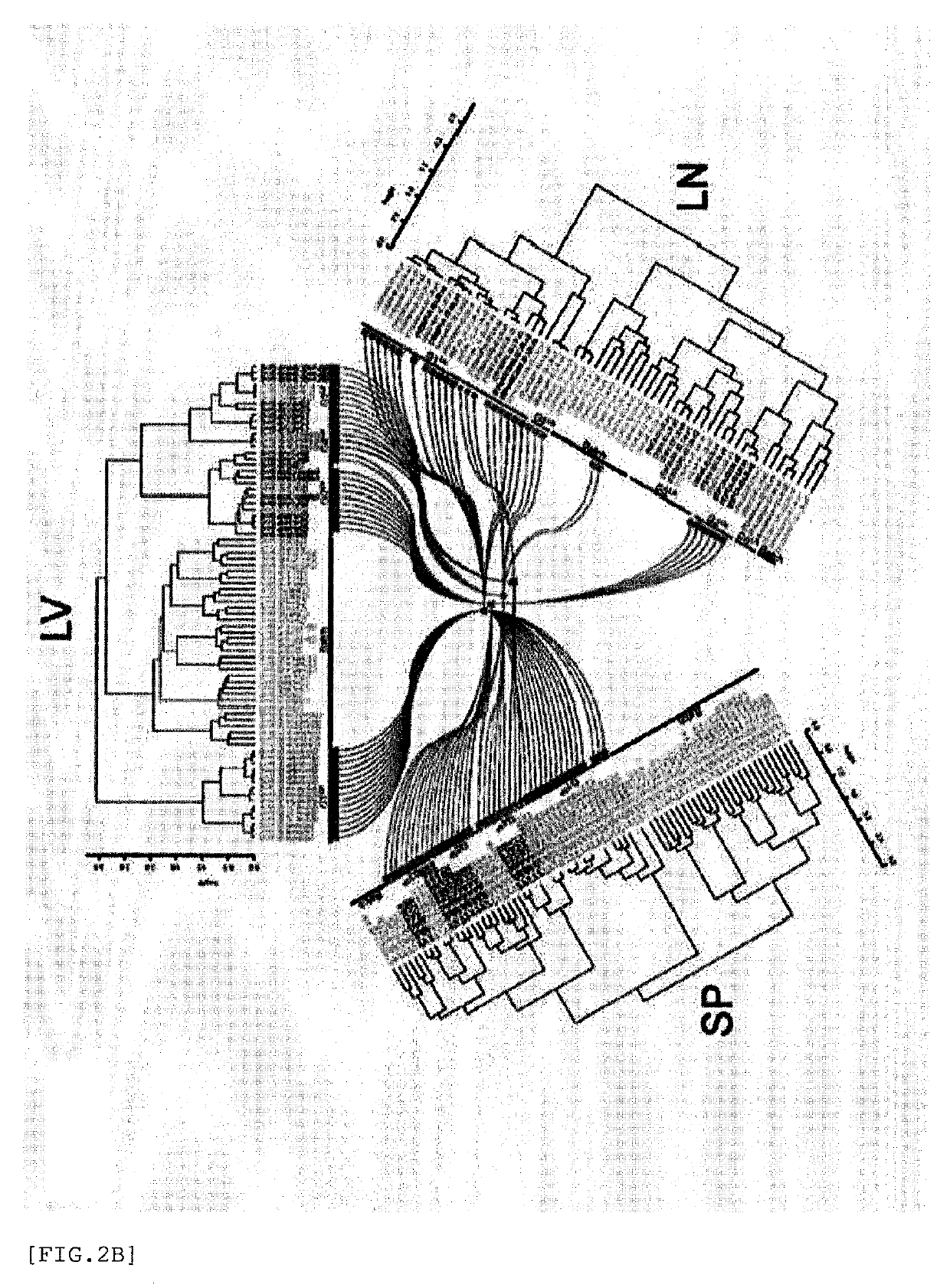Characteristic analysis method and classification of pharmaceutical components by using transcriptomes
a transcriptome and character analysis technology, applied in the field of character analysis methods and component classification, can solve the problems of proactively testing of additional components (additive) and adjuvants, and achieve the effect of accurately predicting a function
- Summary
- Abstract
- Description
- Claims
- Application Information
AI Technical Summary
Benefits of technology
Problems solved by technology
Method used
Image
Examples
examples
[0577]The Examples are described hereinafter. When necessary, all experiments were conducted in compliance with the guidelines approved by the ethics committee of the Osaka University in the following Examples. For reagents, the specific products described in the Examples were used. However, the reagents can be substituted with an equivalent product from another manufacturer (Sigma-Aldrich, Wako Pure Chemical, Nacalai Tesque, R & D Systems, USCN Life Science INC, or the like). PBS used as a control reagent and DMSO were obtained from Nacalai Tesque. Tris-HCl was obtained from Wako Pure Chemical.
[0578](Method)
[0579]Standard Operation Protocol
[0580]All procedures adhere to each of the following standard operation protocols (standard procedure: adjuvant administration and organ sampling (standard procedure 1), RNA extraction and GeneChip data acquisition (standard procedure 2), and quality control and final data inclusion to the database (standard procedure 3). Detailed information on ...
example 2
[0806]This Example carries out a method of classifying substances with an unknown adjuvant function using the method of the invention.
[0807]Appropriate candidate substances are provided as the substances.
[0808]Adjuvant administration, gene marker expression analysis, clustering, other data analysis and the like are performed in accordance with Example 1.
[0809]Candidate substances and reference adjuvants (G1) dciGMP, cGAMP, DMXAA, PolyIC, and R848; (G2) bCD; (G3) FK565; (G4) MALP2s; (G5) D35, K3, and K3SPG; and (G6) AddaVax) are clustered.
[0810](Results)
[0811]The transcriptome of candidate substances when administered to murine spleen, liver, or the like and the transcriptome of reference adjuvants of G1 to G6 are compared, and substances classified to the same cluster are each classified to G1 to G6.
example 31
[0812](Materials and Methods)
[0813](Mice)
[0814]Six-week-old female C57BL / 6J mice were purchased from CLEA Japan. Tlr7− / − or I1-1r− / − mice were purchased from Oriental BioService and the Jackson Laboratory, respectively. Card9− / − (Hara et al., 2007, Nature immunology 8, 619-629), Fcrg− / − (Arase et al., 1997, J Exp Med 186, 1957-1963) or Dap12− / − (Takai et al., 1994, Cell 76, 519-529) mice were donated by Dr. Hara, Dr. Saito, or Dr. Takai, respectively. Tnfa− / − mice were described previously ((Marichal et al., 2011, Nature medicine 17, 996-1002). All animal experiments were approved by the Institutional Animal Care and Use Committee, and performed in accordance with institutional guidelines for the National Institute of Biomedical Innovation, Health and Nutrition animal facility.
[0815](Antigens, Antibodies, Adjuvants and Peptides)
[0816]Ovalbumin was purchased from Seikagaku-kogyo. SV and inactivated WV derived from A / New Caledonia / 20 / 99 strain were a gift from the ...
PUM
| Property | Measurement | Unit |
|---|---|---|
| Volume | aaaaa | aaaaa |
| Volume | aaaaa | aaaaa |
| Volume | aaaaa | aaaaa |
Abstract
Description
Claims
Application Information
 Login to View More
Login to View More - R&D
- Intellectual Property
- Life Sciences
- Materials
- Tech Scout
- Unparalleled Data Quality
- Higher Quality Content
- 60% Fewer Hallucinations
Browse by: Latest US Patents, China's latest patents, Technical Efficacy Thesaurus, Application Domain, Technology Topic, Popular Technical Reports.
© 2025 PatSnap. All rights reserved.Legal|Privacy policy|Modern Slavery Act Transparency Statement|Sitemap|About US| Contact US: help@patsnap.com



